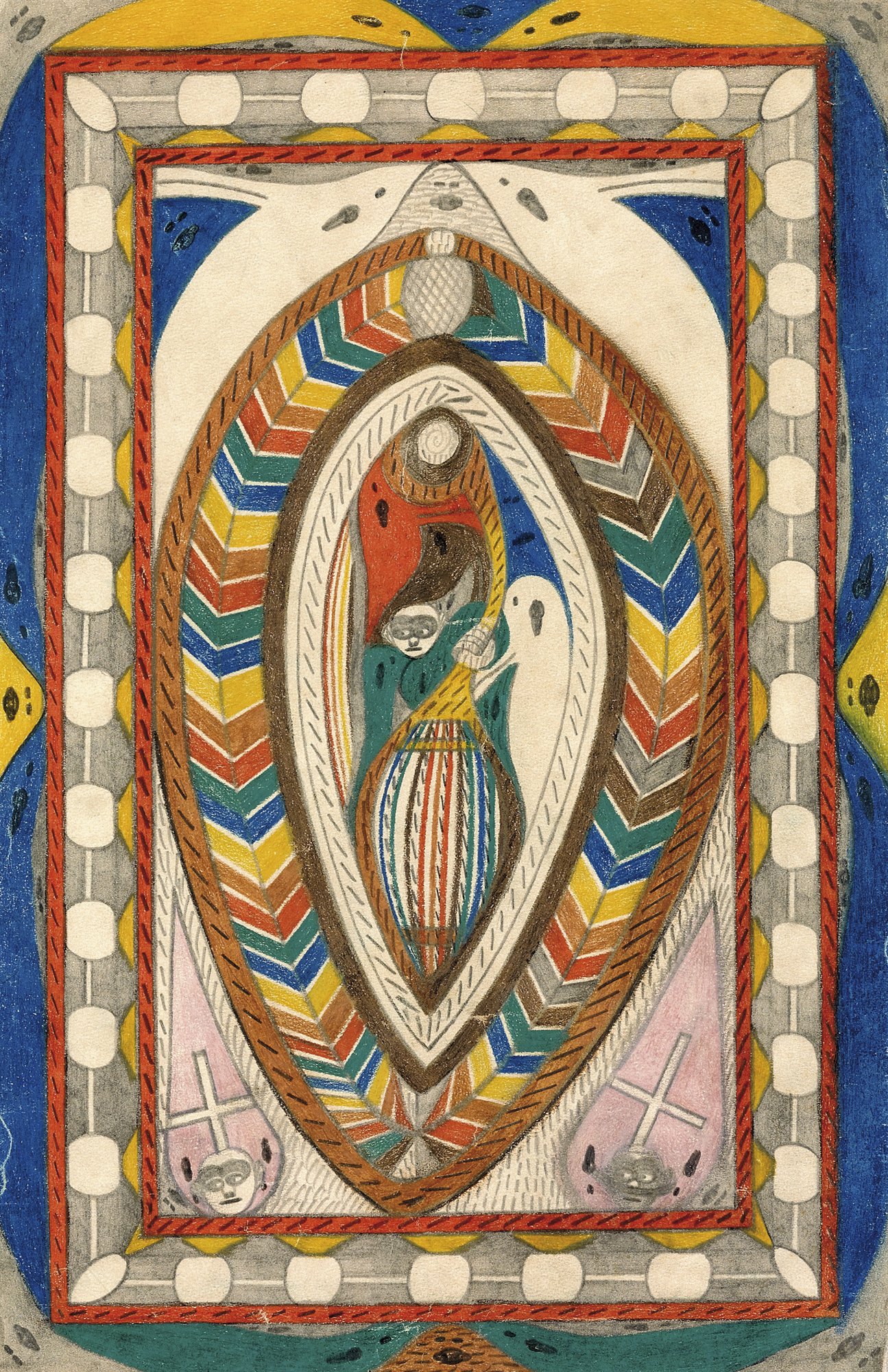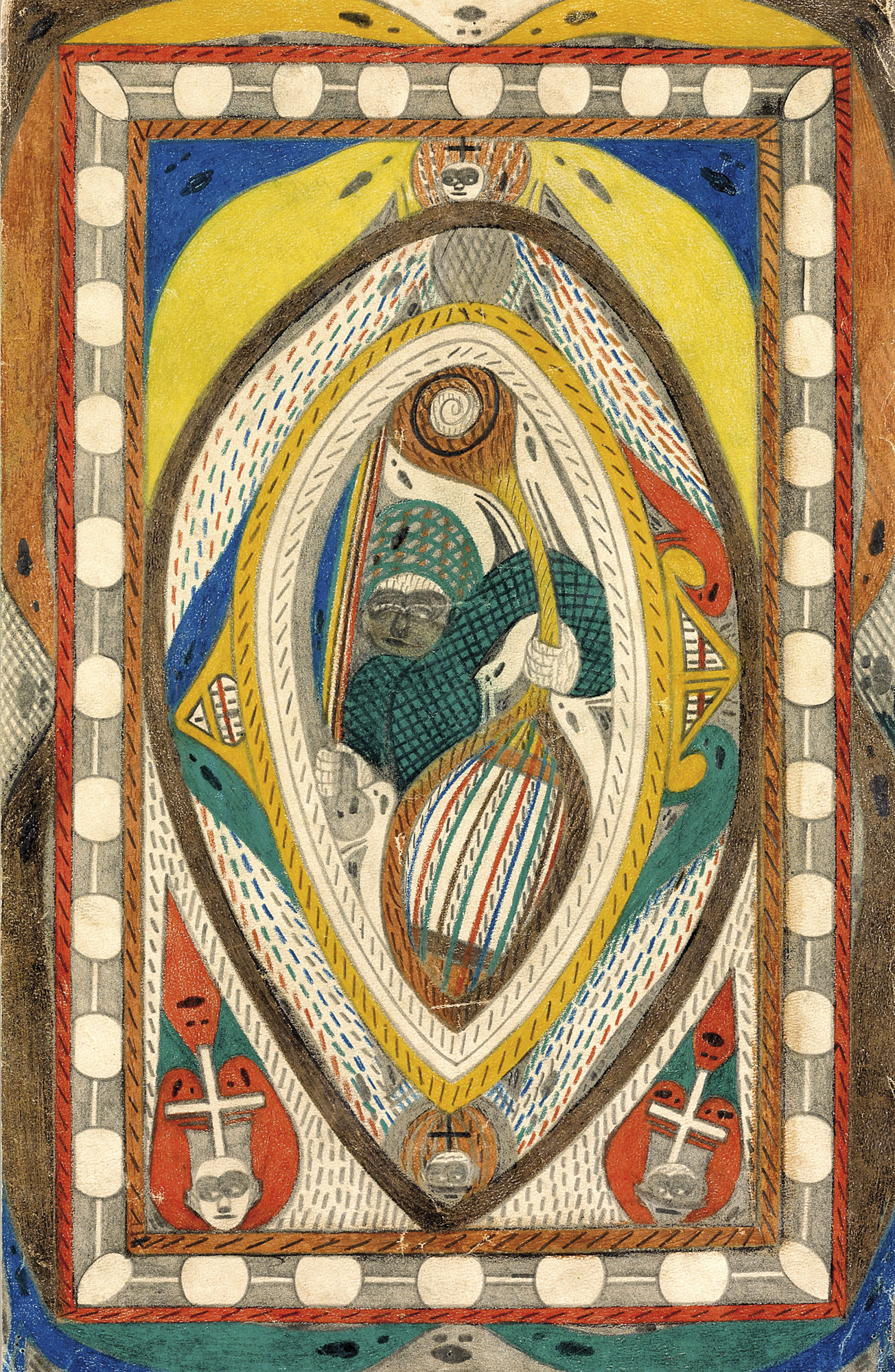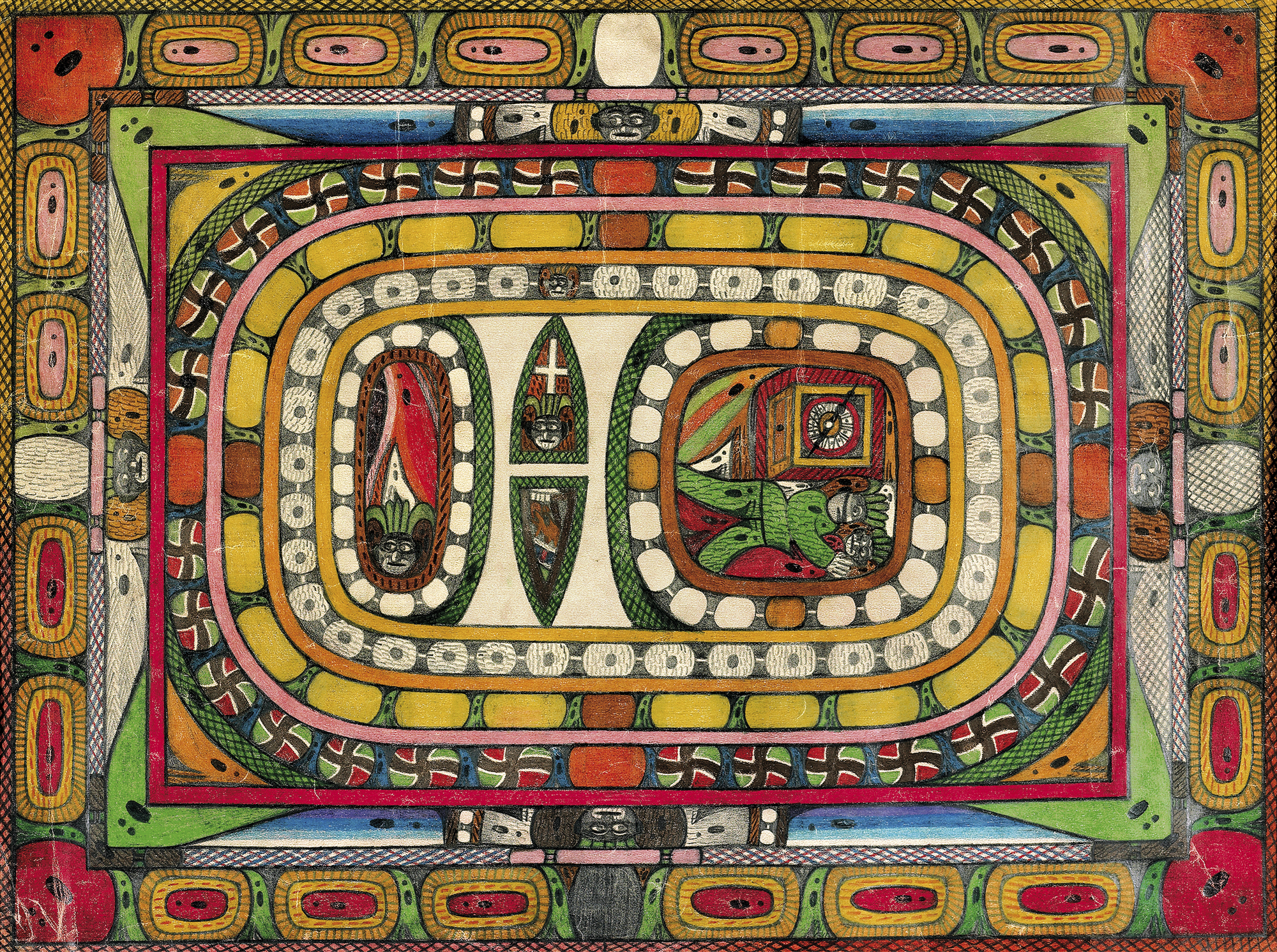A singular personality, Adolf Wölfli is born in 1864 in the Canton of Bern. Abandoned by his father at the age of seven, he is soon placed by the State in different farming families to work as a goatherd, farmhand and woodcutter. Deprived any form of schooling, he suffers abuse in his host families and incomprehension in his love life. Prison and later the psychiatric clinic of Waldau near Bern will be his home after several incidents of indecent assault.
Following his confinement at the age of thirty-five, Wölfli takes up drawing, writing and composing music that he interprets on wind instruments of his own creation. Haunted by hallucinations, quarrelsome and violent, he manages to calm himself by working with coloured pencils all day long. Cut off from society and never having enjoyed any formal training in art, Wölfli is one of the key artists in what Jean Dubuffet dubs Art Brut in 1945. These artists, self-taught, psychotic, prisoners or inmates of mental institutions, have in common an art that is spontaneous and free of any academicism.
The scope of Wölfli’s activity is considerable, with the artist creating over thirty years some 25,000 pages that are pasted with images, drawn on and scribbled with texts and musical scores. Called “the great Wölfli” by Dubuffet, this inmate of a Waldau asylum was considered by André Breton as one of the three most important artists of the 20th century. His works were exhibited at the 1972 Documenta in Kassel and figure in the collections of numerous museums, notably in Bern (Kunstmuseum) and Lausanne (Collection de l’Art Brut).
Following his confinement at the age of thirty-five, Wölfli takes up drawing, writing and composing music that he interprets on wind instruments of his own creation. Haunted by hallucinations, quarrelsome and violent, he manages to calm himself by working with coloured pencils all day long. Cut off from society and never having enjoyed any formal training in art, Wölfli is one of the key artists in what Jean Dubuffet dubs Art Brut in 1945. These artists, self-taught, psychotic, prisoners or inmates of mental institutions, have in common an art that is spontaneous and free of any academicism.
The scope of Wölfli’s activity is considerable, with the artist creating over thirty years some 25,000 pages that are pasted with images, drawn on and scribbled with texts and musical scores. Called “the great Wölfli” by Dubuffet, this inmate of a Waldau asylum was considered by André Breton as one of the three most important artists of the 20th century. His works were exhibited at the 1972 Documenta in Kassel and figure in the collections of numerous museums, notably in Bern (Kunstmuseum) and Lausanne (Collection de l’Art Brut).


